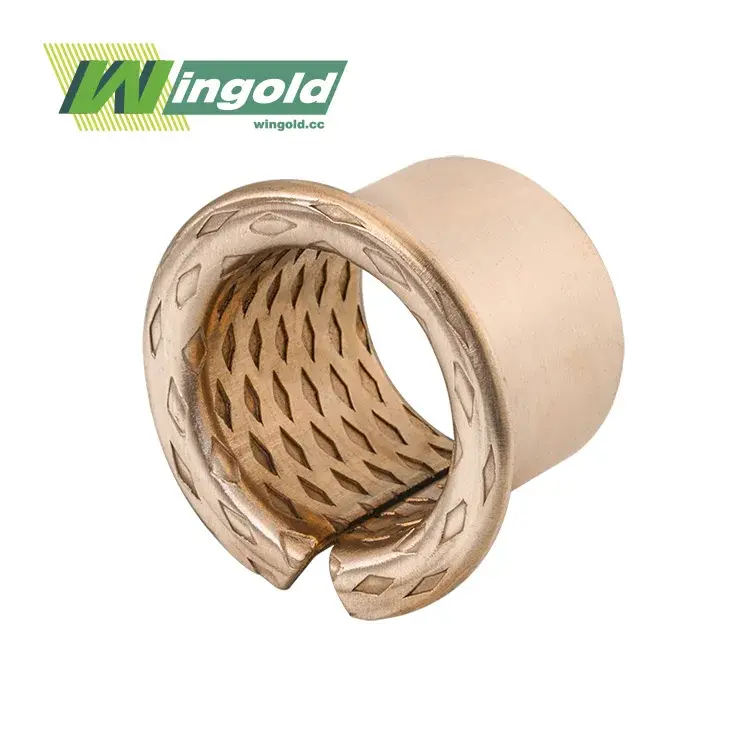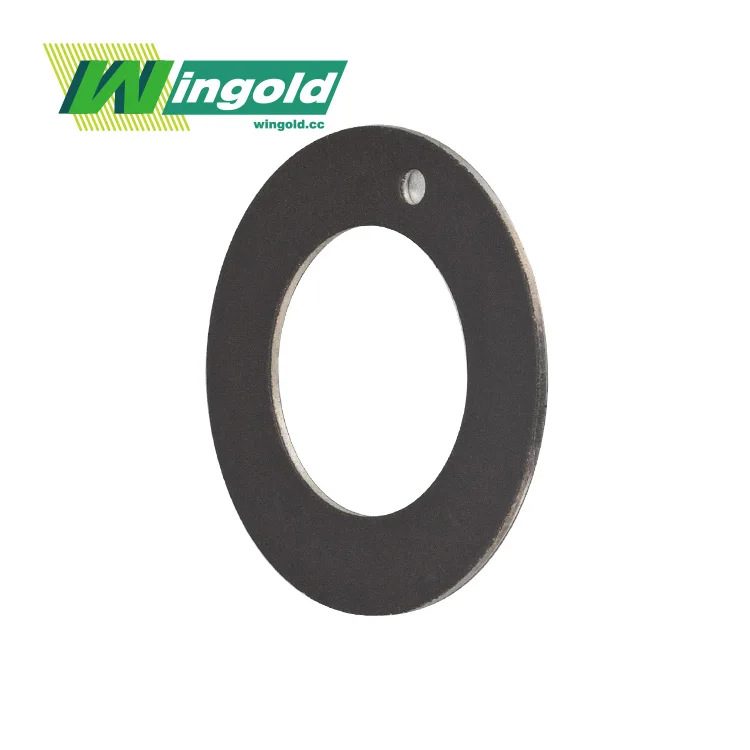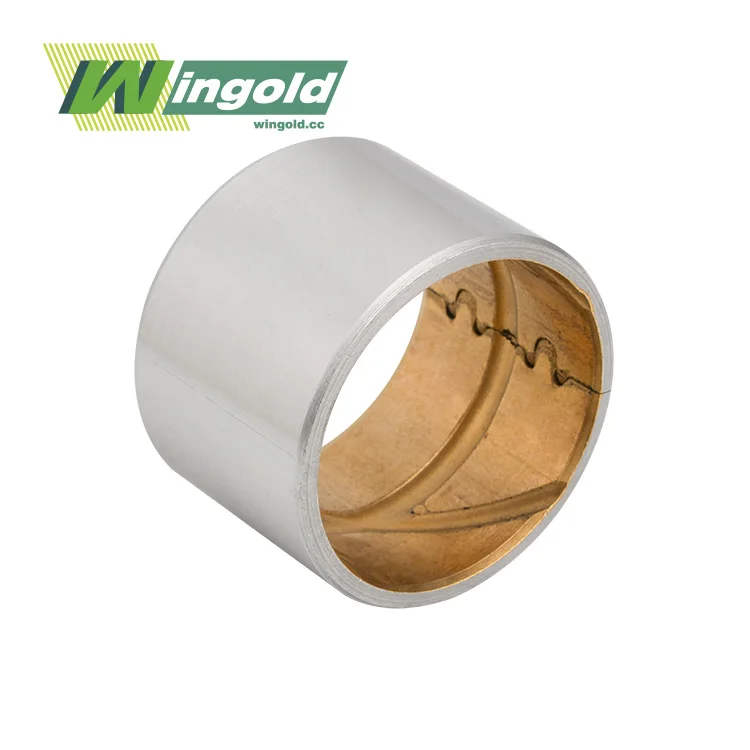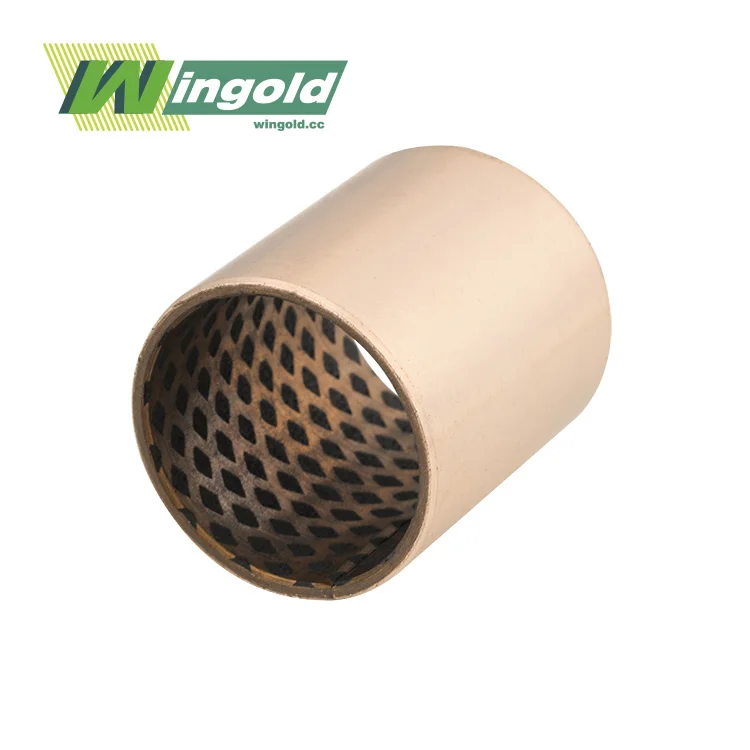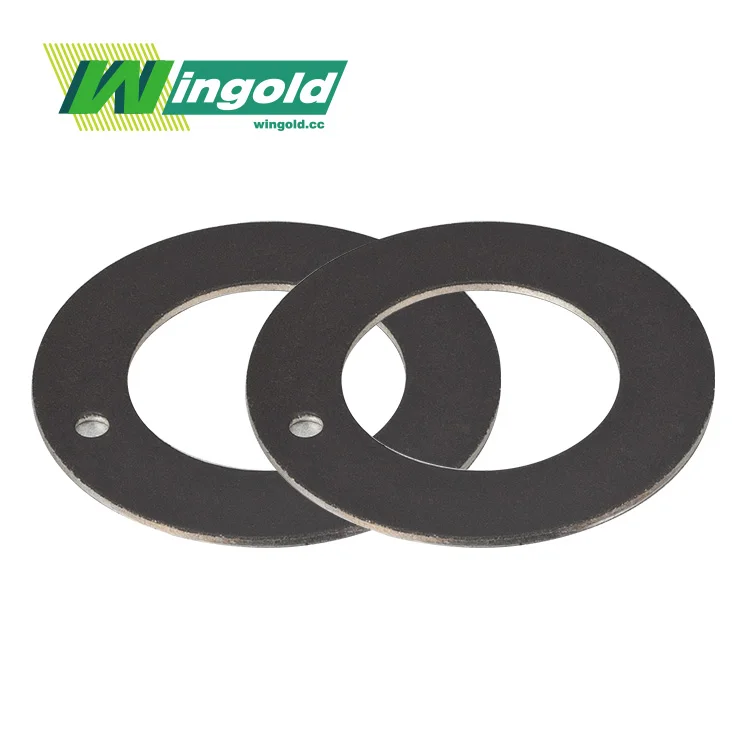Understanding Metric Bronze Thrust Washers
Metric bronze thrust washers are precision-engineered components designed to excel in demanding industrial applications. These specialized washers are crafted from high-quality bronze alloys, offering a unique combination of strength, durability, and low friction properties. The metric sizing ensures compatibility with international standards, making them ideal for use in a wide range of machinery and equipment.
Bronze, as the primary material for these thrust washers, brings several advantages to the table. Its inherent properties include excellent wear resistance, high thermal conductivity, and the ability to maintain structural integrity under extreme conditions. The alloy composition, often including tin (such as CuSn8 or CuSn10), further enhances these properties, resulting in a component that can withstand heavy loads and high rotational speeds.
Metric bronze thrust washers are available in various sizes, typically ranging from 10mm to 200mm in inner diameter, with thicknesses between 0.5mm and 10mm. This wide range allows for precise fitment in diverse applications, from small precision instruments to large industrial machinery. The metric system simplifies integration into designs and ensures consistency across international markets.
Key Features of Metric Bronze Thrust Washers
Several key features set metric bronze thrust washers apart from their conventional counterparts:
Surface Finish: These washers can be ground for ultra-smooth operation or left as-cast for applications where a specific surface texture is beneficial.
Tolerance Control: Manufactured to tight tolerances, often adhering to standards like ISO 3547, ensuring precise fit and optimal performance.
Temperature Resistance: Capable of operating in a wide temperature range, typically from -40°C to 150°C, making them suitable for diverse environmental conditions.
Customization Options: Many manufacturers offer the ability to customize these washers with special features like oil grooves, dimples, or specific surface treatments to enhance lubrication and performance.
The unique properties of bronze, combined with precise engineering, make these thrust washers ideal for applications where traditional materials might fall short. They excel in scenarios requiring low friction, high load-bearing capacity, and resistance to wear and corrosion.
Applications and Benefits of Metric Bronze Thrust Washers
Metric bronze thrust washers find their niche in a myriad of industrial applications, each benefiting from their unique properties and design. These components play a crucial role in machinery where axial loads need to be managed efficiently, contributing to the overall performance and longevity of the equipment.
Industrial Applications
The versatility of metric bronze thrust washers is evident in their wide-ranging applications:
Automotive Industry: Used in transmissions, steering systems, and suspension components.
Heavy Machinery: Essential in construction equipment, agricultural machinery, and mining equipment.
Marine Applications: Utilized in propeller systems, steering mechanisms, and various shipboard machinery.
Aerospace: Found in landing gear assemblies, flap mechanisms, and other critical aircraft components.
Industrial Manufacturing: Integral to machine tools, conveyor systems, and robotic equipment.
Energy Sector: Used in turbines, generators, and oil drilling equipment.
In each of these applications, metric bronze thrust washers contribute to the smooth operation of rotating or oscillating parts, managing thrust loads while minimizing friction and wear.
Benefits of Using Metric Bronze Thrust Washers
The adoption of metric bronze thrust washers brings several significant benefits to mechanical systems:
Enhanced Performance: The low friction coefficient of bronze reduces energy loss and heat generation, leading to improved overall system efficiency.
Increased Durability: Bronze's inherent wear resistance and strength contribute to longer component life, reducing the frequency of replacements and maintenance.
Corrosion Resistance: Bronze's natural resistance to corrosion makes these washers suitable for use in harsh environments or where exposure to corrosive substances is a concern.
Self-Lubricating Properties: Some bronze alloys have self-lubricating qualities, reducing the need for external lubrication and simplifying maintenance routines.
Thermal Management: Bronze's excellent thermal conductivity helps dissipate heat, preventing localized hot spots and potential thermal damage.
Customization Potential: The malleability of bronze allows for easy customization, including the addition of lubricating grooves or special surface treatments to enhance performance further.
These benefits collectively contribute to reduced downtime, lower maintenance costs, and improved reliability of the machinery in which these washers are employed.
Choosing the Right Metric Bronze Thrust Washer
Selecting the appropriate metric bronze thrust washer for a specific application requires careful consideration of several factors. The right choice can significantly impact the performance, efficiency, and longevity of the mechanical system in which it's employed.
Factors to Consider
When choosing a metric bronze thrust washer, consider the following key factors:
Load Capacity: Assess the maximum axial load the washer will need to support. This includes both static and dynamic loads.
Operating Speed: Consider the rotational speed at which the washer will operate, as this affects friction and heat generation.
Environmental Conditions: Take into account factors such as temperature, humidity, and exposure to corrosive substances.
Dimensional Requirements: Ensure the washer's dimensions (inner diameter, outer diameter, and thickness) are compatible with the application.
Surface Finish: Determine whether a ground or as-cast surface is more suitable for the specific application.
Lubrication Needs: Consider whether additional lubrication features, such as oil grooves or dimples, are necessary.
Compliance Requirements: Verify if the washer needs to meet specific industry standards or regulations.
Customization Options
Many manufacturers offer customization options for metric bronze thrust washers to meet specific application requirements:
Alloy Composition: Tailoring the bronze alloy composition to enhance specific properties like hardness or corrosion resistance.
Surface Treatments: Applying special coatings or treatments to improve wear resistance or reduce friction.
Geometric Modifications: Adding features like tabs, notches, or special shapes to suit unique installation requirements.
Lubrication Enhancements: Incorporating oil grooves, pockets, or other features to improve lubrication in high-load or high-speed applications.
By carefully considering these factors and exploring customization options, engineers and designers can select the optimal metric bronze thrust washer for their specific application, ensuring optimal performance and longevity of their mechanical systems.
Conclusion
Metric bronze thrust washers represent a crucial component in modern machinery, offering a blend of durability, efficiency, and versatility. Their ability to manage axial loads while minimizing friction makes them indispensable in a wide range of industries, from automotive to aerospace. By understanding the unique properties of these washers and carefully selecting the right one for each application, engineers can significantly enhance the performance and longevity of their mechanical systems.
As technology continues to advance, the demand for high-performance components like metric bronze thrust washers is likely to grow. Their adaptability to various operating conditions and the potential for customization ensure their continued relevance in the ever-evolving landscape of industrial machinery.
For more information on how metric bronze thrust washers can benefit your specific application, or to explore customization options, don't hesitate to reach out to our team of experts at Wingold Bearing. Contact us at info@wingold.cc
to discuss your unique requirements and find the perfect solution for your mechanical needs.
FAQs
Can metric bronze thrust washers be used in high-temperature environments?
Yes, metric bronze thrust washers are suitable for high-temperature applications, typically operating effectively in temperatures up to 150°C.
Are metric bronze thrust washers suitable for marine applications?
Absolutely. The corrosion-resistant properties of bronze make these washers excellent choices for marine environments.
How do I determine the correct size of metric bronze thrust washer for my application?
Consider the shaft diameter, available space, and load requirements. Consult with a bearing specialist for precise sizing.
Can metric bronze thrust washers be used without lubrication?
While some bronze alloys have self-lubricating properties, additional lubrication is often recommended for optimal performance and longevity.
